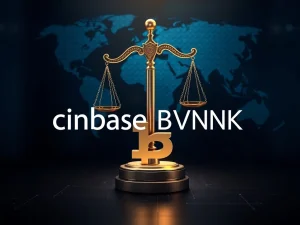Revolutionary Battery Asset Tokenization: U Power and IoTeX Power a New Era with Blockchain

Imagine a world where the very batteries powering our electric vehicles aren’t just physical components, but also dynamic, digital assets capable of generating their own value. This isn’t science fiction; it’s the exciting reality unfolding with the groundbreaking partnership between U Power Limited (Nasdaq: UCAR) and IoTeX. This collaboration is set to redefine how we perceive and interact with energy infrastructure, spearheading a new era of Battery Asset Tokenization through the power of blockchain.
The Vision Behind Battery Asset Tokenization
On July 23, 2025, U Power, a leader in battery-swapping technology with its UOTTA™ system, formalized a strategic alliance with IoTeX. Their shared vision? To transform physical battery assets into programmable digital entities. This isn’t just about putting batteries on a ledger; it’s about creating a dual-value system where these essential energy components can generate both utility (by powering EVs) and financial returns. By tokenizing these assets, U Power aims to unlock new avenues for capital formation, moving beyond traditional financing models that often fall short in innovative sectors.
This initiative promises several key advantages:
- Enhanced Liquidity: Tokenized assets can be traded more easily, improving liquidity compared to illiquid physical infrastructure.
- Reduced Capital Costs: A hybrid funding mechanism allows U Power to secure capital without immediate equity dilution or heavy traditional debt.
- Transparency and Verification: Blockchain ensures real-time tracking, provenance verification, and safety monitoring of battery assets.
- Fractional Ownership: Enabling smaller investors to participate in large-scale infrastructure projects.
How the IoTeX Blockchain Powers This Revolution
At the heart of this transformative partnership lies the IoTeX Blockchain. Renowned for its focus on connecting real-world data and devices to the blockchain, IoTeX provides the robust and secure infrastructure necessary for this ambitious undertaking. Their IoT blockchain platform is uniquely suited to handle the complex data streams from U Power’s battery-swapping network, ensuring that every battery’s performance, health, and location can be verified and recorded immutably on-chain.
IoTeX isn’t just a technology provider; they are also a committed partner, demonstrating their belief in U Power’s vision by agreeing to purchase tokens backed by U Power’s corporate bonds. This commitment highlights the financial innovation inherent in the partnership, blending traditional corporate finance with decentralized mechanisms. The integration of blockchain with AI technologies further strengthens this ecosystem, addressing critical challenges in the electric vehicle (EV) sector, such as precise battery provenance verification and accurate residual value assessment.
Unlocking Value: The Potential of Real-World Asset Tokenization
The collaboration between U Power and IoTeX is a prime example of the burgeoning trend of Real-World Asset Tokenization (RWA). This involves taking tangible assets—like real estate, art, commodities, or in this case, EV batteries—and representing their ownership or value as digital tokens on a blockchain. This process democratizes access to investment opportunities and introduces unprecedented levels of transparency and efficiency.
For U Power, tokenizing their UOTTA™ battery assets means transforming physical infrastructure into liquid digital assets. This approach not only enhances asset transparency but also enables more efficient capital allocation. The ability to securitize and trade these assets on platforms like HabitTrade, which will serve as the structuring and execution agent, signals a strong focus on institutional adoption and regulatory compliance, paving the way for broader acceptance of tokenized RWAs across various industries.
Decentralized Energy: A New Era for EVs
This partnership isn’t just about financial innovation; it’s about building the foundation for a truly Decentralized Energy ecosystem. By creating a decentralized battery management system, U Power and IoTeX are enabling real-time tracking, safety monitoring, and performance optimization of EV batteries on a scale previously unimaginable. This level of transparency and control can significantly improve the efficiency and reliability of EV charging and battery-swapping networks.
The implications extend beyond just batteries. A decentralized energy grid could lead to more resilient power systems, facilitate peer-to-peer energy trading, and empower consumers with greater control over their energy consumption and generation. This aligns perfectly with the broader Web 3.0 ethos of decentralization and user empowerment, applying DeFi principles to scale critical infrastructure.
What Does This Mean for DePIN Infrastructure?
The U Power and IoTeX partnership is a significant leap forward for DePIN Infrastructure (Decentralized Physical Infrastructure Networks). DePIN aims to leverage blockchain to build, operate, and maintain physical infrastructure networks in a decentralized manner. Batteries, as a core component of the EV and energy grid, are ideal candidates for DePIN, and this collaboration sets a powerful precedent.
The success of this venture could catalyze broader adoption of blockchain in asset management and inspire similar initiatives across various sectors, from telecommunications to transportation and smart cities. The market has already shown interest in decentralized infrastructure, with IoTeX’s native token (IOTX) seeing significant price increases and trading volume surges. While the immediate market response to the announcement was muted due to the absence of detailed asset flows, the long-term potential for influencing future trends in tangible asset tokenization and fostering new models of asset management and financial innovation is immense.
In essence, U Power and IoTeX are not just partnering; they are pioneering a new paradigm where physical assets are seamlessly integrated with the digital economy. This revolutionary step holds the promise of unlocking unprecedented value, enhancing transparency, and building more resilient and decentralized infrastructure for the future.
Frequently Asked Questions (FAQs)
What is Battery Asset Tokenization?
Battery Asset Tokenization is the process of converting physical battery assets into digital tokens on a blockchain. These tokens can represent ownership, a share of value, or a right to use the underlying battery, enabling them to be traded, managed, and financed digitally.
How does the IoTeX Blockchain facilitate this partnership?
The IoTeX Blockchain provides the secure and scalable infrastructure for connecting real-world devices and data to the blockchain. It enables real-time tracking, verification, and management of U Power’s battery assets, transforming them into programmable digital assets that can generate both utility and financial returns.
What are Real-World Assets (RWAs) in the context of blockchain?
Real-World Assets (RWAs) refer to tangible assets like real estate, commodities, or, in this case, EV batteries, whose ownership or value is represented by digital tokens on a blockchain. Tokenizing RWAs aims to bring traditional finance and physical assets into the decentralized digital economy, improving liquidity and transparency.
What is DePIN and how does this partnership relate to it?
DePIN stands for Decentralized Physical Infrastructure Network. It’s a concept where blockchain technology is used to build, operate, and maintain physical infrastructure in a decentralized manner. The U Power-IoTeX partnership is a prime example of DePIN, as it tokenizes and manages physical battery assets on a decentralized network.
What are the potential benefits of this partnership for U Power?
For U Power, the partnership offers significant benefits including securing capital without immediate equity dilution, potentially reducing capital costs through a hybrid funding mechanism, improving liquidity of battery assets, and establishing a decentralized management system for enhanced tracking and optimization.
How does this initiative impact the electric vehicle (EV) ecosystem?
This initiative directly addresses challenges in the EV ecosystem such as battery provenance verification and residual value assessment. By enabling real-time tracking, safety monitoring, and performance optimization through tokenization, it aims to create a more efficient, transparent, and financially viable battery management system for EVs.






